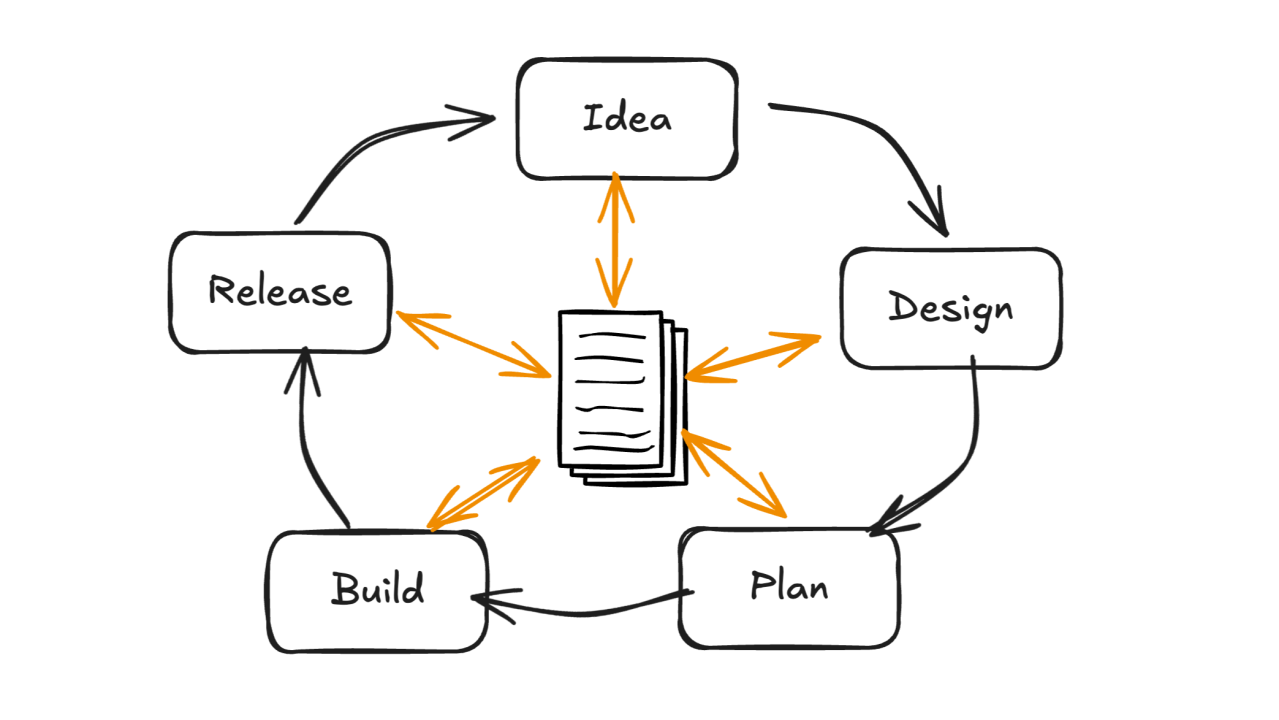How Specs Change Everything for Software Development

 Matthias Lübken•Article
Matthias Lübken•ArticleBy now I think we can agree that AI is changing a lot in software development. Especially since Claude Code, we are seeing tremendous shifts. What we don’t fully understand yet is how teams will change. We’ve heard about “Tiny Teams”, but what does that really mean for how we work?
Just the other day, a friend asked me: “What do you think about the future of project management?” And today, after watching two great talks Advanced Context Engineering for Agents by Dexter Horthy and The New Code by Sean Grove - think I have a hunch:
Tomorrow’s project management will connect requirements, decisions, and code in a single traceable chain — every “why” and “how” and change is transparent to everyone.
Let me explain.
From Code to Specs Coding agents and LLMs aren’t just changing how we write code—they’re shifting our focus to specifications.
Sean Grove made the point clearly: code is only 10–20% of the value engineers create. The other 80–90% lies in structured communication—understanding user needs, planning solutions, verifying outcomes. Specs capture this communication, make it reusable, and elevate it to the real artifact. As Sean put it:
The person who communicates most effectively is the most valuable programmer.
Spec-First Development in Practice Dex Horthy’s team lived through this shift. He was receiving massive PRs—20,000 lines of complex Go code at a time. Impossible to review.
So they went spec-first. Instead of code review, they reviewed specs and tests. Dex eventually stopped reading code entirely:
I don’t look at code anymore. I just read specs.
Over ~8 weeks, the team fully shifted. The results: faster shipping, clearer alignment, and no more PR overwhelm.
The Real Upside: Traceability Once dev teams work from human-readable specs, everyone can participate:
-
Product managers give their initial input and review changes.
-
Designers can align expectations early.
-
Architects can point out critical changes.
-
GTM get a heads-up on what’s being built.
And here’s the magic: every change becomes visible and understandable to all participants. With common practices for versioning and storing specs, we finally get traceability from requirement → decision → code.
This is the core shift in project management: from managing tasks to managing specifications.
Final Thought AI isn’t just changing how we code—it’s changing how we collaborate. As specs become the new source of truth, they unlock new modes of interaction, new team workflows, and even new roles. And the impact goes well beyond the software organization.